2013 Honda Civic Vs 2013 Nissan Sentra

With so many strong competitors in the compact car segment, two long-time Japanese rivals from Honda and Nissan are re-thinking their approach. For 2013 the Honda Civic gets a significant refresh, sporting better driving dynamics and more creature comforts, while the Nissan Sentra has undergone a major makeover, with a stylish new body and an impressive amount of new technology.
So which approach to the compact car segment is more successful? Is the all-new Sentra with its attractive new looks and show-off features the best bet, or is it the Civic with its inner beauty?
MODERN SENTRA OR CLASSIC CIVIC
There’s no denying the fact that the old Sentra had very little sex appeal, with its chunky, boxy exterior styling and cheapo-plastic looking interior. However for 2013 the Sentra looks fresh from a shopping spree at the South Coast Plaza, featuring gorgeous LED lights, 17-inch rims and chrome accents that really compliment the new, curvaceous design of the car. Of course there are a few extras that are part of the SL trim, which bumps the Sentra’s $15,990 base price to $19,820 before additional packages. While base models retain the LED headlights, they don’t have the side view mirrors with integrated turn signals, or fog lights, which give the Sentra a more grown up look.
RESEARCH: Find more detailed specs on the 2013 Honda Civic and 2013 Nissan Sentra
The Civic, on the other hand, is a well-proportioned, retaining its classic, if a little boring design. The front and rear fasciae have been refreshed for a more modern and cohesive Honda brand image. Without a doubt, the new Civic looks closer to its Accord sibling, which is a good thing. Our model, the high-end EX-L with Navigation, costs $23,765, and comes with pretty alloy-wheels (which were upgraded to 17s) and fog-lights over the base $18,165 Honda Civic LX.
PACKED TO THE WHEEL-WELLS
On the inside is where the story changes. Here the Civic looks like the more premium car, thanks to better materials and fabrics. It’s also a more cohesive package, with the Senta’s cabin falling short of its stylish exterior.
As part of the EX-L with Navigation package, the Civic sports comfortable black leather seats and is loaded with convenience features like seat warmers, auto-on/off headlights, a moon-roof, automatic climate control and leather wrapped interior trimmings. Honda also includes three different displays in the Civic, which can lead to a bit of an information overload. In front is a digital speedometer with Eco-Assist, showing two bars that change colors depending on your driving habits. To the right of that screen is Honda’s i-MID display, which should be easily recognizable to anyone who has been in a Honda before.
Finally, there’s the navigation screen, which utilizes both touch and knob based controls. In comparison to the Sentra’s touch-screen, the Honda system was less intuitive thanks to tiny on-screen buttons. We also found it a touch slower, and far more difficult to pair a phone to.
All the controls on the dash are on an angle, facing towards the driver. While this is a nice touch for the person behind the wheel, it’s a bit annoying if you’re the passenger.
There’s just as much tech and conveniences in the Sentra, meaning you’ll find seat warmers, navigation and eco-driving coaches, and they all work just as well as in the Civic. Unique to the Sentra are features like dual-zone climate control and push-button start, two options that are usually saved for bigger, more expensive cars. Unfortunately, the interior design of the Sentra is drab, if not downright uninspired. With fake-wood trimmings this cabin would make drying paint yawn.
What the Sentra’s interior does boast are some sizable dimensions. It sports about an inch more headroom in the front than the Civic, and half an inch more legroom in the rear. The Sentra also has more than two cubic-feet more cargo space in the trunk than the Civic.
ROAD TEST SEALS THE DEAL
Without a doubt, the Honda boasts more refined driving and handling dynamics. Despite being ‘just’ a refresh, the 2013 Civic has a significant amount of changes with its steering and handling, which feels much tighter this time around.
As for the engine and throttle, compared to the Sentra, the Civic feels far more responsive and easily drops gears to help get the car up to speed. That is, until the ‘Econ’ mode is activated, which significantly dulls the experience.
Leading the compact field in terms of offering variable driving modes, Nissan has equipped the Sentra with three unique settings: Normal, Eco and Sport. Adjusting the behaviour of the CVT in the sport mode the Sentra feels a bit quicker off the line than the Civic but the responsiveness is short-lived. In ‘Eco’ mode, the car always feels like it’s always a gear higher than it should be, limiting acceleration, but helping to get better fuel economy.
Compare Specs
| Vehicle | 2013 Honda Civic | Advantage | 2013 Nissan Sentra |
|---|---|---|---|
| Engine | 1.8L | - | 1.8L |
| Horsepower | 140 hp | Civic | 130 hp |
| Max. Torque | 128 lb-ft | - | 128 lb-ft |
| Transmission | 5-Speed Automatic | - | CVT |
| Fuel Economy | 28 MPG city / 39 MPG hwy | Sentra | 30 MPG city / 39 MPG hwy |
| As Tested Fuel Economy | 27 MPG | Sentra | 29 MPG |
| Front Head Room | 37.9 in. | Sentra | 38.0 in. |
| Front Leg Room | 42 in. | Sentra | 42.5 in. |
| Rear Head Room | 36.2 in. | Sentra | 36.7 in. |
| Rear Leg Room | 36.2 in. | Sentra | 37.4 in. |
| Starting Price | $18,165 | Sentra | $15,990 |
| As Tested Price | $26,118 | Sentra | $23,490 |
COMPARE CARS: 2013 Honda Civic vs 2013 Nissan Sentra
Overall, the Civic ceded the fuel-economy war to the Sentra, which is more frugal with its fuel. Rated at 28 mpg city and 39 mpg highway the Civic comes up slightly short of the Sentra on paper with a 30/39 mpg rating. This held true in real-world testing. Tested in cold temperatures and with plenty of hard city driving our numbers came well short of advertised for both models, though reflected the Sentra’s city advantage with 27 mpg average for the Civic and 29 for the Sentra.
Netting two miles per gallon more than the Civic, the Sentra’s CVT is both its saviour and its downfall. Yes, the CVT was to blame for its bizarre throttle response, and can be extremely loud when passing someone, but it’s very efficient, helping the Nissan go further on a single tank. Thankfully, on the highway the Sentra’s cabin quiets down, though due to extensive sound deadening the Civic is quieter overall.
THE VERDICT
These two compacts contrast each other from the very start. As a refreshed model, the 2013 Civic sports some much needed tweaks, putting it back competing at the top in the small car segment. In comparison, the Sentra is more affordable, more attractive and returns better fuel economy numbers, all while sporting some new tech and convenience features.
Still, we found the Civic a more refined vehicle, due almost entirely to its early refresh. Boasting all the usual Civic qualities while adding in improved driving dynamics and interior quality it’s an easy pick in this comparison.
The move by Honda to tighten the screws on its popular compact proved to be a shrewd one. In fact, we suggest Nissan do the same.
2013 Honda Civic, 2013 Nissan Sentra
LOVE IT
- Quiet overall Interior
- Excellent interior materials
- Responsive driving dynamics
- Eye-catching exterior
- Excellent tech features
- Superior fuel economy
LEAVE IT
- Worse fuel economy
- More expensive
- Classic styling
- Lethargic driving dynamics
- Uninspired Interior
- Loud CVT

Sami has an unquenchable thirst for car knowledge and has been at AutoGuide for the past six years. He has a degree in journalism and media studies from the University of Guelph-Humber in Toronto and has won multiple journalism awards from the Automotive Journalist Association of Canada. Sami is also on the jury for the World Car Awards.
More by Sami Haj-Assaad


















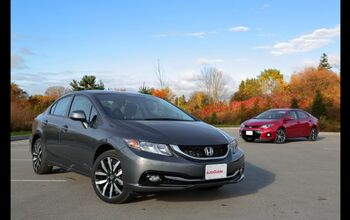
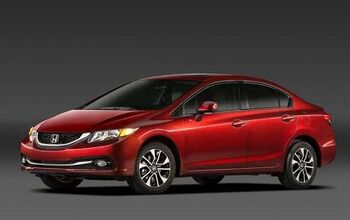
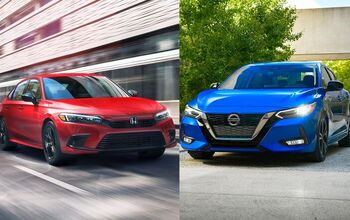

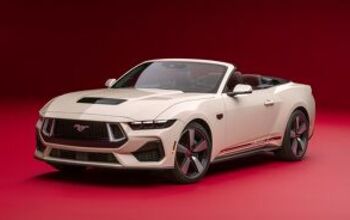
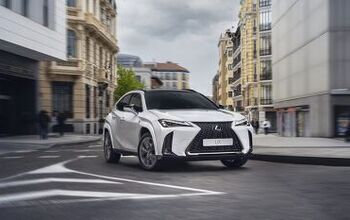







Comments
Join the conversation